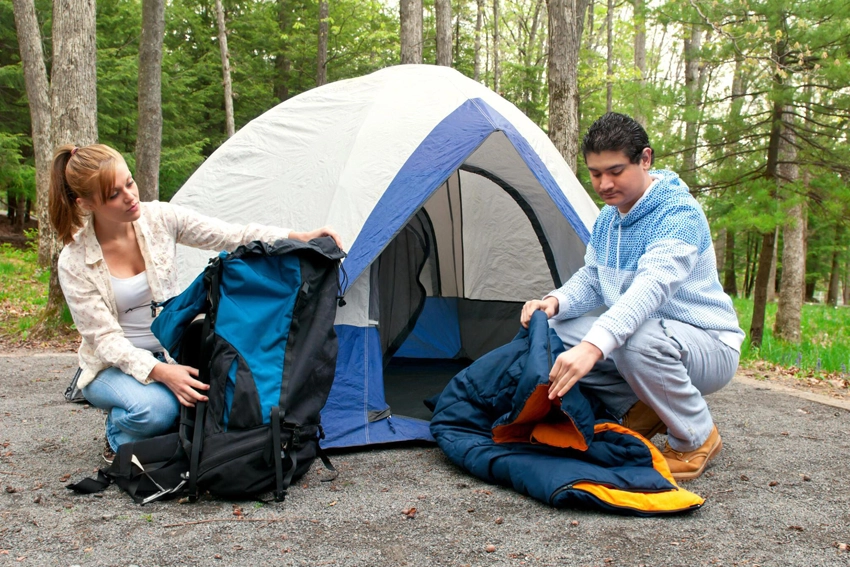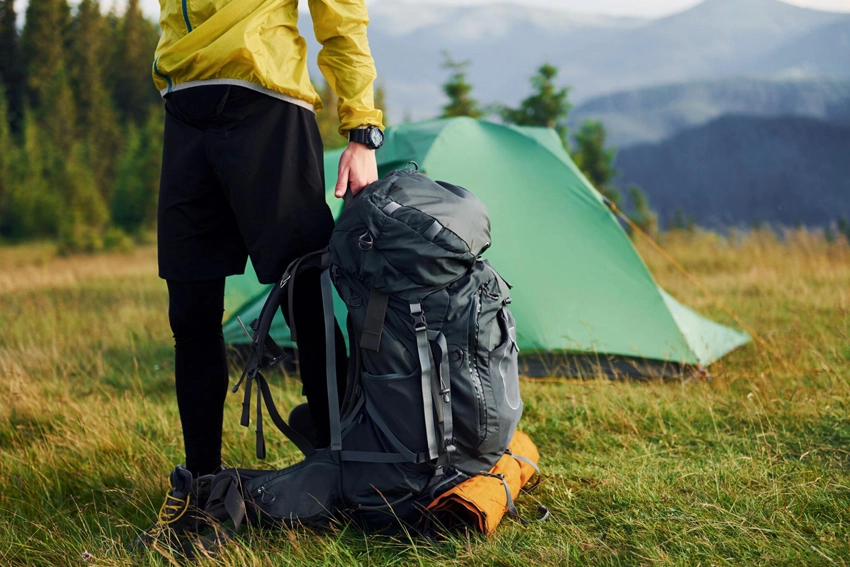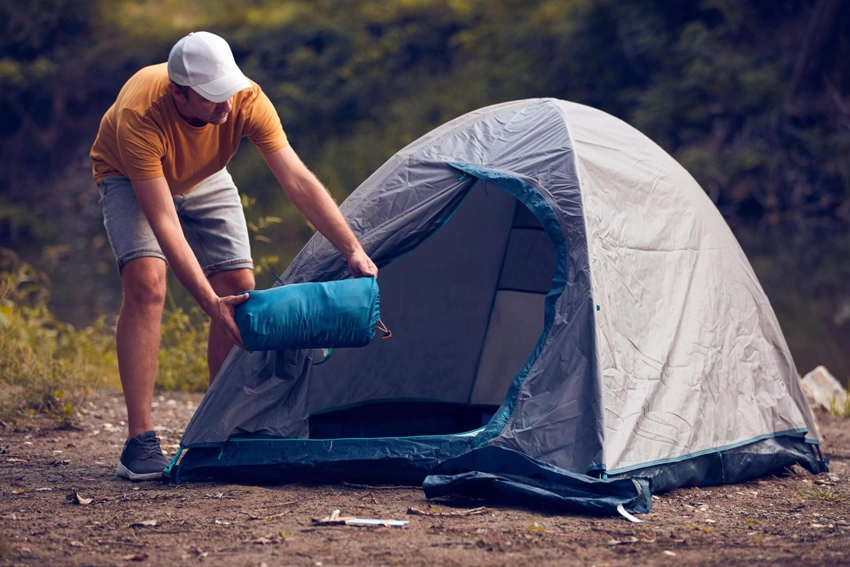Heading out into the wild for a backpacking adventure requires careful planning and organization. Every item in your pack is crucial, and your tent, in particular, serves as a vital sanctuary in the midst of rugged terrain.
Getting the hang of packing your tent correctly is key to a successful outdoor experience.
In this guide, we’ll dive into the details of tent packing for backpacking trips. From selecting the right tent to arranging its components in your backpack, we’ll cover it all. Each step is essential for maximizing space, minimizing weight, and keeping your essentials easily accessible.
Join us as we uncover the essential tips and techniques for packing your tent, so you can head into the wilderness with confidence and ease.
Choosing the Ideal Tent

When gearing up for your next backpacking adventure, choosing the perfect tent is your first crucial step. Here’s what to consider to make sure you’re all set:
Types of Backpacking Tents:
Backpacking tents come in various styles, each with its own set of features. Freestanding tents stand on their own and are a breeze to set up. Non-freestanding tents need stakes for support but are often lighter. If you’re looking for a compromise, semi-freestanding tents offer a balance.
Think about your priorities—weight, space, and weather resistance—when picking the tent that suits your needs best.
Weight and Portability:
Tents vary in weight, from ultralight options for the minimalist hiker to more robust designs with extra features and durability. Consider how much weight you’re comfortable carrying and look for a tent that balances weight with functionality.
Make sure your tent packs down small to save space in your backpack.
Capacity and Interior Space:
Decide how many people will be using the tent and choose one that fits. Backpacking tents tend to be cozier than car camping tents, so pick one that gives you enough room to sleep comfortably without feeling cramped.
Look for extra features like vestibules for gear storage and interior pockets for keeping things organized.
Seasonal and Weather Adaptability:
Choose a tent based on the weather conditions you expect to encounter. Three-season tents are great for spring, summer, and fall, while four-season tents are built to handle snow and strong winds.
Check that the tent’s rainfly and floor are made from durable, waterproof materials to keep you dry no matter the weather.
Ease of Assembly and Durability:
Opt for a tent that’s easy to set up, especially if you’re dealing with tricky terrain or bad weather. Features like color-coded poles, simple pole clips, and quick-release buckles make assembly a breeze.
Focus on tents made from tough materials that can handle repeated use on the trail. By carefully evaluating these factors and choosing a tent that fits your backpacking needs, you’ll set yourself up for a comfortable and enjoyable outdoor experience.
Take the time to explore different models and invest in a high-quality tent that will stand up to the demands of your adventures.
Disassembling and Folding the Tent
Properly disassembling and packing your tent is crucial for efficient storage and maintaining its condition for future adventures. Here’s a step-by-step guide to help you do it right:
Remove Stakes and Guy Lines:
Start by pulling out the stakes and unfastening any guy lines holding the tent down. Gently pull each stake out of the ground and carefully coil the guy lines to avoid tangling.
Detach the Rainfly:
If your tent has a separate rainfly, unclip or unzip it from the main tent body. Lay it flat and fold or roll it up neatly to keep it compact.
Collapse the Tent Poles:
Follow the manufacturer’s instructions to collapse the tent poles. Most poles are connected by shock cords, making it easy to fold them into shorter segments.
Disassemble the Tent Body:
With the poles out, detach the tent body by unclipping or unzipping it from the poles. Lay it flat and smooth out any wrinkles to make folding easier.
Fold or Roll the Components:
Fold or roll the tent body starting lengthwise, then into thirds or quarters. Do the same with the rainfly, making sure it’s folded or rolled to match the size of the tent body.
Organize and Secure:
Arrange the folded or rolled components in your backpack to maximize space. Place heavier items like tent poles at the bottom for better weight distribution. Use compression straps or stuff sacks to keep everything in place and prevent shifting during your hike.
Perform Final Checks:
Before you store your tent, double-check to ensure everything is properly folded, rolled, and secured. Make sure you haven’t left any stakes or guy lines behind, and inspect the tent body and rainfly for any signs of damage that might need attention.
By following these steps, you’ll keep your tent in great shape and make packing up a breeze for your next adventure!
Packing Your Tent in Your Backpack
When packing your tent for your hiking adventure, follow these tips for a smooth and organized setup:
Start with a Solid Base:
Lay your neatly folded tent body or footprint at the bottom of your backpack. This creates a stable base for the rest of your gear and helps distribute the weight evenly.
Arrange the Tent Poles:
Place the collapsed tent poles vertically along the sides of your backpack, using any internal straps or pockets. Position them carefully to avoid any discomfort as you move.
Add the Rainfly and Extras:
Layer the folded or rolled rainfly on top of the tent body, fitting it between the poles and the main compartment of your backpack. If your backpack has external attachment points or pockets, use those to stow the rainfly and free up space inside.
Organize Small Items:
Keep smaller tent accessories like stakes, guy lines, and repair kits in designated pockets or compartments within your backpack. Use zippered pockets, mesh pouches, or gear loops to keep things tidy and easy to reach.
Compress and Adjust:
After packing everything, use internal compression straps or cinch straps to secure and compress the contents of your backpack. Adjust the straps to balance the weight and ensure stability while hiking.
Do a Final Check:
Before you set out, double-check that everything is packed securely and balanced in your backpack. Make sure no stakes or guy lines are sticking out and that the rainfly is protected from any potential snags.
Proper packing makes for a more comfortable and hassle-free hiking experience. Enjoy your adventure!
Final Checks and Adjustments
Before you head out on your hike, it’s essential to perform a thorough check to make sure your tent is packed securely and your backpack is properly adjusted. Here’s a handy checklist to follow:
Test Stability and Balance:
Shift your weight from side to side to check the stability of your backpack. Make sure the weight is evenly distributed and that the pack feels stable and comfortable on your back.
Check Compression Straps:
Ensure all compression straps are tightly fastened to keep your backpack’s contents compact and prevent them from shifting during your hike. Adjust as needed to maintain a balanced load and reduce movement.
Confirm Accessibility:
Make sure essential items like water bottles, snacks, and navigation tools are within easy reach without having to unpack everything. Arrange these items so that the most frequently used ones are easily accessible.
Protect the Rainfly:
Inspect the rainfly to ensure it’s protected from potential snags or abrasions. Secure any loose ends or extra fabric using compression straps or gear loops to avoid damage.
Ensure Comfort and Fit:
Adjust the shoulder straps, hip belt, and sternum strap to achieve a comfortable and secure fit. Check that the weight of the pack is evenly distributed and that the straps don’t cause any discomfort.
Verify Emergency Essentials:
Double-check that emergency items like your first aid kit, navigation tools, and communication devices are easily accessible. Know where these are in your pack so you can reach them quickly if needed.
Consider Environmental Factors:
Before setting off, assess the weather, terrain, and any potential hazards. Make any necessary adjustments to your gear and pack contents to ensure you’re prepared for the conditions you might encounter.
By doing these final checks and adjustments, you’ll set yourself up for a safe and enjoyable hiking experience. Happy trails!
In Conclusion
As you wrap up your preparations for your backpacking adventure, you’ve honed the skills needed to pack your tent efficiently and start your journey with confidence. By choosing the right tent, disassembling it thoughtfully, and minimizing weight, you’ve optimized your space and ensured that your essential gear is easily accessible.
Before you hit the trail, take a moment for those final checks and adjustments. Make sure your gear is packed securely and your backpack is adjusted for maximum comfort and stability. Familiarize yourself with your equipment and its contents, and stay adaptable to changing weather and terrain.
For those well-deserved breaks at your campsite, check out our guide to the best backpacking chairs. They’ll help you unwind after a day of adventure.
Above all, savor the solitude and connection with nature that backpacking provides. Whether you’re navigating rugged trails, setting up camp under the stars, or sharing stories around the fire, each moment of your journey reflects your resilience, creativity, and love for the outdoors.
As you set off into the wilderness, may your adventures be filled with unforgettable moments, meaningful experiences, and a deep appreciation for the natural world. Safe travels, and may your journey be as rewarding as the destination itself.





